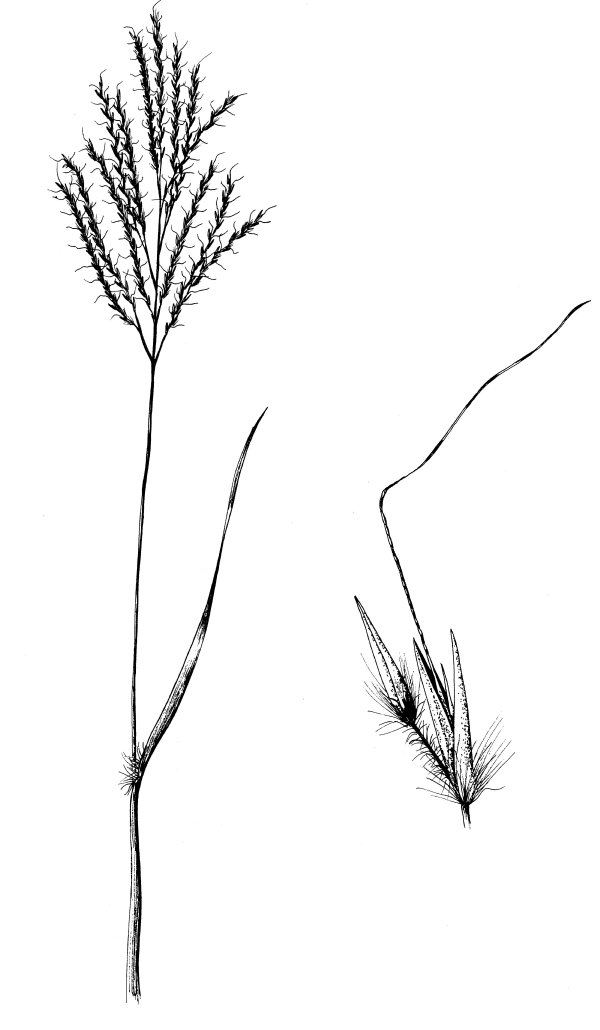
Andropogon ischaemum L. var. songaricus Rupr. ex Fisch. & Mey. Old World Bluestem Habit: Slender tufted to widely rhizomatous perennial. Culms: Somewhat decumbent often rooting at the nodes, 30-90 cm. tall, grooved on one side, glabrous to bearded at the nodes. Blades: Flat to folded or revolute, slightly keeled with a very prominent midrib, scabrous to thinly pilose, 2-20 cm. long, 1-4 mm. wide. Sheaths: Slightly keeled, smooth. Ligule: Membranous, fringed, about 1 mm. long. Inflorescence: Short with 2-8 main branches, 2-6 cm. long, rachis internodes and margins of the pedicels long-villous. Spikelets: Sessile spikelet 4-6 mm long, somewhat longer than the pedicel and rachis-joints, scabrous, the twisted bent awn 8-15 mm. long. Pedicellate spikelet reduced to a single glume, usually 2-3 mm. long, short-awned, spreading, the pedicel pilose. Glumes: Of fertile (sessile) spikelet subequal, acuminate, the first dorsally flattened, with a strong nerve near each margin, the midnerve faint; second thinner, keeled above, scabrous on the keel, ciliate on margin. Sterile lemma: Nearly as long as the glumes, acuminate. Fertile lemma: Entire or 2-toothed at the apex, shorter than the sterile lemma, with a twisted awn, 8-15 mm. long, bent about 3 mm. from the base. Habitat: Prairies, plains, open woods, sand hills. July-September. Kansas Range: Throughout. Use: Has been reseeded on croplands, particularly those areas with low fertility. Only cultivars that have been selected for better palatability should be planted for grazing. Remarks: This grass is usually less palatable than native species and will become a single species stand in grazed pastures at the expense of the native grasses. Synonyms: Bothriochloa ischaemum (L.) Keng var. ischaemum